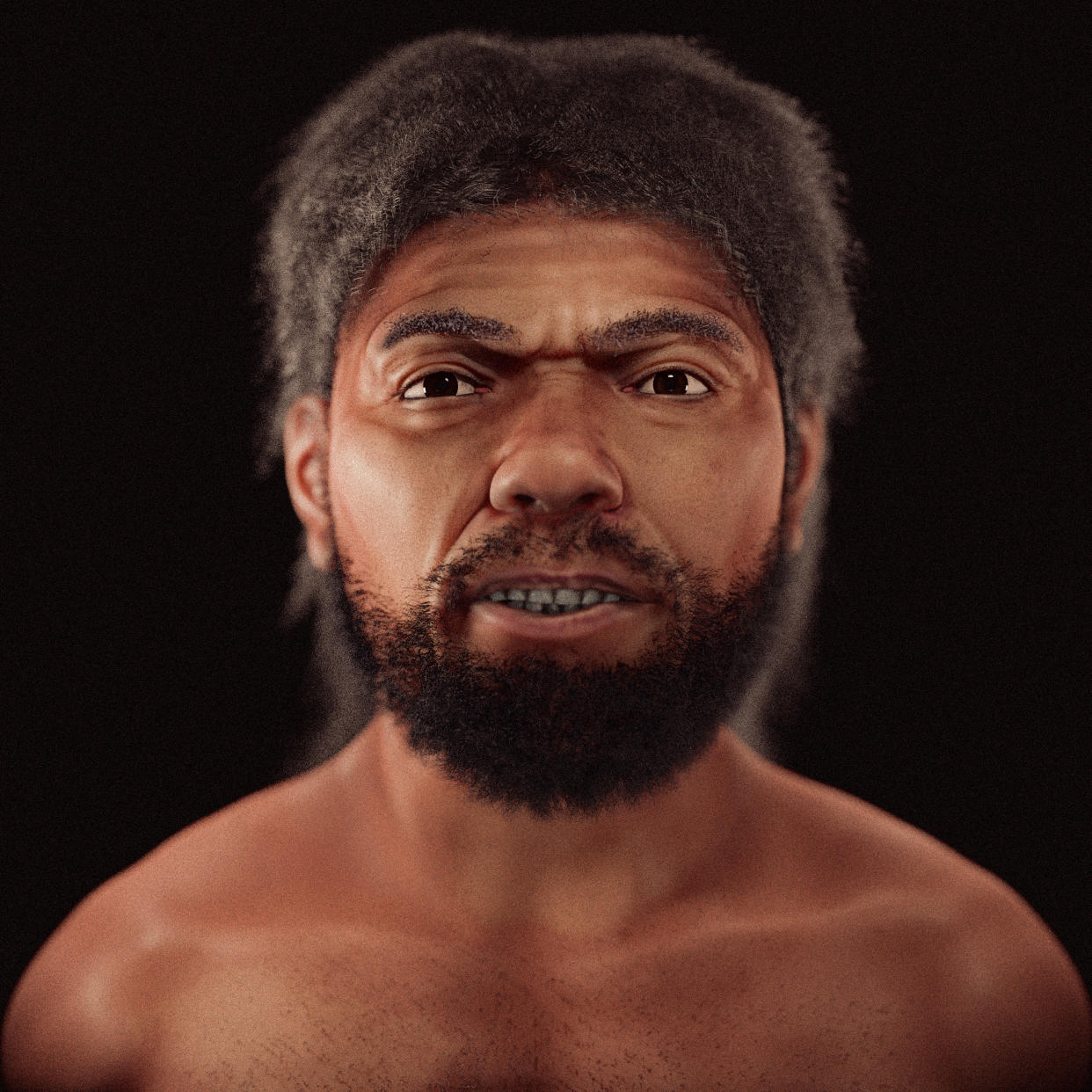'Oldest human's' face recreated using technology

Thanks to the work of a graphics expert from Brazil, we can now see the face of the person believed to be the oldest known example of our species, Homo sapiens.
The individual's skull, known as Skhūl V, was found in northern Israel and is thought to be around 80,000 to 120,000 years old, making it a candidate for the oldest human remains.
Following a forensic reconstruction Brazilian graphics expert Cicero Moraes authored the new study and reconstructed our ancestors' features. He describes the face as stronger than humans today and that modern man appears "fragile" in comparison. "A series of measurements were studied and compared with modern humans, archaic and other hominids," he says. "It is clearly perceived that the fossil Skhul V has characteristics that place him at the intersection between such groups and this is fascinating, as it leads us to ask what defines a modern and an archaic man, what differs a Homo sapiens from a Neanderthal and in what period was this clearer? What we also see is how fragile modern man appears compared to the bone structure of archaics and other hominids."
Two approaches related to facial approximation were worked on, one more objective and the other more artistic. The objective approach consisted of a bust equipped with elements closely linked to the anatomical aspects of the approximation and, since the initial stage of the process was composed only of data collected from CT scans, it was possible to generate an anatomically coherent face, in black and white tone. Moraes added subjective elements such as skin tone, eye colour and hair to bring life to the creation and depict the early human's age. Skhul V is believed to have been between 30 and 40 years old when he died. The skull was found in 1932 in the Skhūl Cave near Mount Carmel, Israel. Scientists originally thought the hominid was from an earlier human species, as his skull is unusually robust, but he's now believed to be an early, rough and ready member of our species, homo sapiens.


